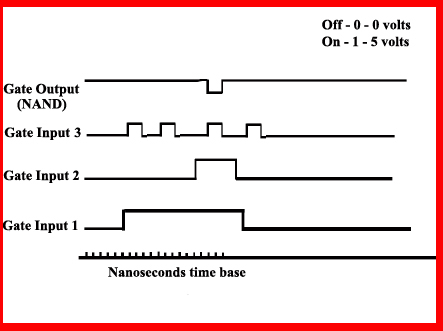
“Nanoseconds”
21 September 2008
My first career path job after college was at Scope (Scope) Electronics in Reston, Virginia. At the time, Scope was one of the defense contractors located around the Washington, D.C. beltway, or better known as a beltway bandit.
Now at the time, 1969, there was no such thing as personal computers or even Intel processor chips and so military electronics of the computational type, meaning computer-like, had to be designed and built using what is called small scale integration (SSI) integrated circuit chips. These chips had a specific function like a “not and” (NAND) or “not or” (NOR) or “flip flop”. At that time, getting 2 flip flops in the same chip package was a big deal. Oh, yeah, these were all militarized circuit packages meaning they could withstand low and high temperature extremes.
Ok, so I join Scope and am given the task of being part of a team redesigning a test set for an airborne computer built by Scope. Wish I had one of the drawings I created of the computer boards inside the test set but although they are all declassified now, they have long since been moved to microfiche or some other media and stored in some government archive, somewhere. Anyway, any one circuit board may have 50 or 60 SSI chips connected together to allow a specific test set function such as a memory access controller or a system timing board (controlled system functions via a user control panel on the front of the unit).
So I would design a board using SSI circuits and the board would then be fabricated in Scopes wire wrap shop and the board returned to me to test and debug.
Insert board into test set chassis, attach a Hewlett Packard (HP), multi-trace oscilloscope to various critical board output points and apply test set power.
Now lean over and look into the hood surrounding the green display of the HP and see signal one, signal 2 and signal 3, each being only nanoseconds long. Nanoseconds. Out of school and suddenly looking at nanoseconds going by.
A nanosecond? There are 1 billion nanoseconds in one second.
What did a trace look like?

Looking at billion's of a second. At the time, took it as just another day but now introspect, perhaps main point to cosmos karma Scope Electronics job? To see a billionth of a second???
Have you ever see a billionth of a second???